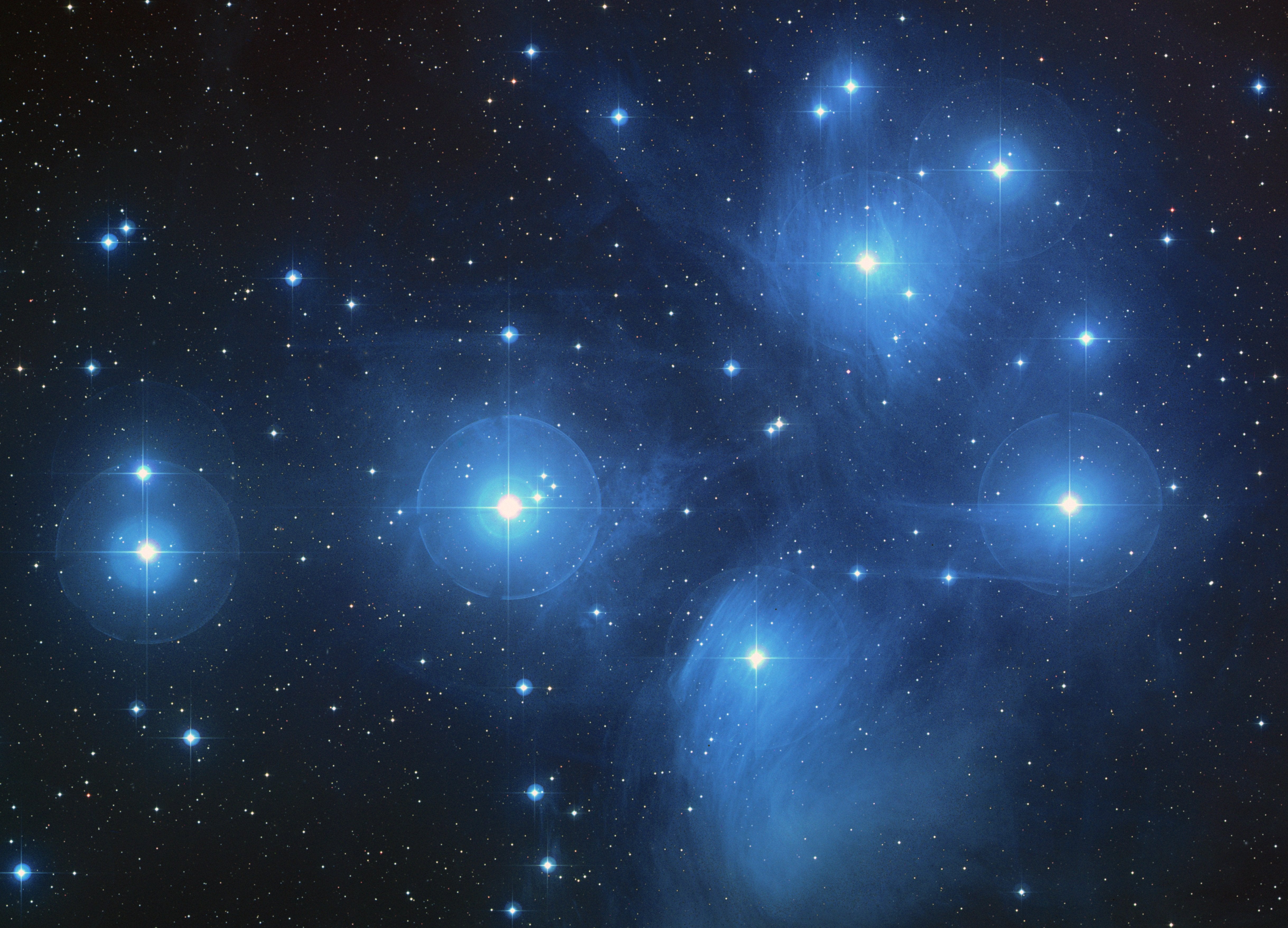Stargazing in November: The star clusters of the Bull
The Pleiades star cluster features in legends from around the world, often as a group of young women fleeing an aggressor. Look to the east and you’ll see them, writes Nigel Henbest

On a crystal-clear November evening, there’s a sight in the sky that stands out from all the rest. Over to the east, you’ll spot a patch of light that – when you focus on it – resolves itself into a shimmering ball of stars. Alfred, Lord Tennyson, was so moved by the sight that the Victorian Poet Laureate described it as “a swarm of fireflies tangled in a silver braid”.
The Pleiades star cluster features in legends from around the world, often as a group of young women fleeing from an aggressor. In Greek myth, they were seven daughters of Atlas, the Titan who was tasked with holding up the sky. The powerful hunter Orion took a fancy to the beautiful ladies and pursued them for seven years through the countryside, until Zeus took pity on them and placed them among the stars. When Orion died, he was positioned in the sky is such way that Orion appears to vainly chase Atlas’s daughters across the sky.
Though this cluster is well-known as the Seven Sisters, sky-watchers typically see any number of stars but seven. Most people can pick out the six brightest stars with the naked eye, while keen-sighted observers can discern up to 11 members. And binoculars or a small telescope reveal dozens more.
These are just the most luminous in a group of at least 1,000 stars, which lies some 440 light years away. The brightest stars in the Pleiades are hot and blue, and all the stars are young – around 100 million years old (about 2 per cent of the Sun’s age).
The Pleiades lie on the edge of the constellation of Taurus, and another star cluster forms the Bull’s head: the V-shaped Hyades, lying just to the right of the brightest star, Aldebaran. According to legend, the Hyades was a group of nymphs who cared for Bacchus – the god of wine-making – when he was a baby. To the Romans, though, the Hyades were a litter of little pigs; and the Chinese saw them as a net full of rabbits.
The Hyades is the nearest star cluster to the Earth, lying 153 light years away. It contains about 200 stars, all born around 625 million years ago. Although Aldebaran, marking the bull’s angry eye, looks as though it’s part of the Hyades, this red giant just happens to lie in the same direction, and at less than half the distance from Earth.
What’s up
The Evening Star shines clearly through the November mists, low in the south-west after sunset. The crescent Moon passes near Venus on the evenings of 7 and 8 November, as a stunning celestial duo.
Further round to the south, you’ll find the second brightest planet, Jupiter. The giant world is up close and personal to the First Quarter Moon on 11 November. In between these two brilliant orbs lies the rather fainter Saturn.
Unfortunately, the steadily brightening Moon spoils a regular meteor shower that we usually enjoy in November. The Leonids are fragments of Comet Tempel-Tuttle, burning up as they rain down into the Earth’s atmosphere. You may see some of the brighter shooting stars on the night of 17/18 November; otherwise, wait until next month for a better meteor display as the Geminids light up the sky.
While the large and dull constellations of autumn still fill much of the heavens, the eastern sky is enlivened by the emergence of the showy winter star-patterns. Highest up is Taurus, the celestial Bull, sporting the glistening Pleiades (see main story for more on these Seven Sisters).
The Full Moon passes between the Pleiades and Taurus’s brightest star, Aldebaran, on 19 November. In the early hours of that day, the Moon starts to slip into the Earth’s shadow, but it sets before the eclipse really gets under way. To enjoy this lunar eclipse at its best, you’ll need to be in the Americas or the Pacific Ocean.
Below Taurus lies the familiar shape of Orion, the hunter; and to the left the twin stars of Gemini, Castor and Pollux.
If you’re up just before dawn, look low in the morning twilight to the south-east and you may be lucky enough to spot Mercury at the start of November. On the morning of 10 November, it’s joined by Mars. The Red Planet is currently far off in its orbit, and it appears ten times fainter than Mercury: the pair will look lovely in binoculars.
Diary
4 November, 9.14 pm: New Moon
7 November: Moon near Venus
8 November: Moon near Venus
10 November: Moon near Saturn
11 November, 12.46 pm: First Quarter Moon near Jupiter
17 November: Maximum of Leonid meteor shower
19 November, 8.57 am: Full Moon between Aldebaran and the Pleiades; partial lunar eclipse
23 November: Moon near Castor and Pollux
26 November: Moon near Regulus
22 November, 12.27 pm: Last Quarter Moon
Philip’s 2022 Stargazing (Philip’s £6.99) by Nigel Henbest reveals everything that’s going on in the sky next year
Subscribe to Independent Premium to bookmark this article
Want to bookmark your favourite articles and stories to read or reference later? Start your Independent Premium subscription today.

Join our commenting forum
Join thought-provoking conversations, follow other Independent readers and see their replies